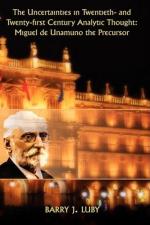|
This section contains 9,491 words (approx. 32 pages at 300 words per page) |

|
SOURCE: Round, Nicholas G. “‘Without a City Wall’: Paz en la Guerra and the End of Realism.” In Re-Reading Unamuno, edited by Nicholas G. Round, pp. 101-20. Glasgow, Scotland: University of Glasgow Department of Hispanic Studies, 1989.
In the following essay, Round argues that Paz en la Guerra is both one of the last works of nineteenth-century Spanish realism as well as postrealism—using a metanarrative to unite documentary, historical fact with novelesque, imaginative vision.
Of Paz en la guerra two things are fairly generally granted: that it is unlike Unamuno's later novels, and that it stands at an extreme outer limit of Spanish nineteenth-century realist fiction.1 Both these commonplaces are rooted in very widely-shared experiences of reading the book. The compulsion which Unamuno feels to convey the inwardness of events is still, at this stage in his work, contained within the forms of a story of outward events...
|
This section contains 9,491 words (approx. 32 pages at 300 words per page) |

|


